* (restored)
An easily traceable lineage heads towards punk, a genre of abrasive and rebellious music largely played by white people (although I’m well aware of the Bad Brains, X-Ray Spex singer Poly Styrene and Richard Hell and the Voidoids guitarist Ivan Julian): the early Who, the garage bands included on the NUGGETS compilation, the Velvet Underground, the Stooges, the MC5 and New York Dolls. There’s a canon of African-American artists from the counterculture era who were equally risk-taking, willing to dabble in noise and adventurous: Love singer /guitarist Arthur Lee, Jimi Hendrix, Funkadelic, Sly Stone, Miles Davis during his electric period from 1970 to 1975. They could have inspired young black musicians directly later in the ‘70s, but hip-hop started shortly after punk, drawing on these artists mostly as sources for samples. With the exception of George Clinton’s many Parliament-Funkadelic projects, who are probably tied with James Brown as the most sampled artist ever in hip-hop, their influence has been more subtle and subterranean.
The concept of “psychedelia” which is central to this day, to me, has nothing directly with drug use even if started out to describe tripping on LSD, mescaline and mushrooms. Some of the music included here directly talks about that experience, but some of it – such as Prince’s AROUND THE WORLD IN A DAY – was made by artists who, at that point in their lives had never taken drugs. Outkast’s ATLIENS, recorded after rapper Andre Benjamin stopped taking drugs, is much trippier than their first album, made when both members of the duo were smoking pot. I have not taken psychedelic drugs myself. To me, psychedelia was an idea that helped break down racial barriers, such as the coding of “rock” as white despite its African-American origins, and genre ones as well. If you listen to the entirety of Miles Davis’ BITCHES BREW or Funkadelic’s FREE YOUR MIND AND YOUR ASS WILL FOLLOW and MAGGOT BRAIN back to back on your iPod, you will wind up in a different state of consciousness even while completely sober. By 1973 or so, these barriers were back in full force. But psychedelia continued influencing musicians and still does so to the present day, and I wouldn’t have bothered curating this day if I just did a list of my favorite “psychedelic soul” albums – if you google those keywords, a dozen such lists will pop up. The concept remains important and relevant to artists as different as Erykah Badu, Gary Clark Jr., the Flatbush Zombies and Strange Ghost.
This page wound up ballooning. There are areas I just couldn’t cover, such as the large psychedelic rock scene that developed in ‘70s Africa and dub reggae, which is blatantly designed to be listened to under the influence of marijuana and the way it can alter sound. But dub had a major influence on Britain’s trip-hop scene – as well as earlier post-punk – and subsequent notions about black psychedelia, which I did touch on. I would love to be able to include white artists like P-Funk hanger-on Ruth Copeland, the REMAIN IN LIGHT-era Talking Heads and Portishead, as well as artists of color who were not black, as different as Santana and the funk-influenced industrial band 23 Skidoo. All of the above made music with a similar feel to those I have included. I’m writing this at a time when “rock” remains coded white and, usually, middle-aged and male and seems to be fading from pop cultural currency the way jazz did after fusion, even if individual rock artists continue to chart high on Billboard’s top 200. It seems to be an automatic assumption that it’s made by and for people who look like me. This may have been the case for most of its history, but there have been more progressive slippages, they exist in the present day, and genre boundaries have always been looser than radio programmers and record company marketers would ever admit. Psychedelia has influenced even contemporary artists I didn’t write about, from R&B singer Miguel, who has lifted lyrics from the Zombies and whose new single “Sky Walker” refers to psychedelic mushroom in its chorus, to the “desert blues” scene in African countries like Mali and Niger, where musicians like Tinariwen have offered a distinctly African take on blues-rock inspired by Hendrix and Led Zeppelin and Mdou Moctar starred in a remake of PURPLE RAIN.
Thanks to Kim Greene, Daniel McKleinfeld and Dave Taylor for their suggestions and advice.
Here are a few links that may help fill in blanks I didn’t have space for::
The Black Rock Coalition, formed by music critic Greg Tate and members of Living Colour in the mid ‘80s: http://blackrockcoalition.org
Since I don’t know much about African psychedelia myself, here’s a guide: http://www.cvltnation.com/far-psychedelic-rock-1970s-africa/
A primer on the history of dub: http://www.factmag.com/2014/04/16/dubbing-is-a-must-a-beginners-guide-to-jamaicas-most-influential-genre/3/
Another history of dub, with an excellent quote from producer Scientist: ““Dub has a triangular structure and if you know how to access that structure, you can create mysticism within the listener’s mind,” notes Scientist, offering technical acumen indicative of his name. “It lives longer than the straight [original] cut because the listener never hears dub the same way twice.”
http://www.billboard.com/articles/news/dance/7857092/jamaica-dub-music-reggae-electronic-music?
This lengthy article offers an in-depth history of the desert blues scene in Mali: https://magazine.atavist.com/the-desert-blues
SECTION 1: THE COUNTERCULTURE ERA
Demon Fuzz-AFREEKA!
This 1970 album lives up to its name, with plenty of fuzzed-out guitars, but it’s just as funky, filled with Latin and African polyrhythms. A version of Santana, if Carlos Santana played like Wayne Kramer or Ron Asheton? The group consisted of members of Caribbean descent who met while living in London. It can be heard its entirety on this YouTube link.
Rotary Connection-“I Am the Black Gold of the Sun”
Best known these days for serving as a launching pad for vocalist Minnie Ripperton, the concept behind Rotary Connection was a hard rock band backing two soul singers, and “I Am the Black Gold of the Sun” combines Ripperton’s ethereal singing with funky congas and noisy guitars (even if they’re fairly low in the mix), stretching several styles into one 5-minute song. Their 1969 album SONGS consisted of covers by the Band, Cream, Hendrix, and the Rolling Stones, among others, while this song appeared on their 1971 follow-up HEY LOVE.
George Clinton & Parliament-Funkadelic-“Super Stupid”
Here’s a live clip of the latest incarnation of P-Funk performing my second favorite song from MAGGOT BRAIN, shot last February. This doesn’t have the same Temptations-meets-Black Sabbath vibe of the studio version, in part because you can’t make out most of the words, but the minor-key organ melody comes through loud and clear, the lead guitarist really rips and the decision to extend the song to twice the length of its studio version works.
Funkadelic-“Maggot Brain”
As much as George Clinton and Parliament-Funkadelic accomplished across many styles and incarnations, I think their peak is this 10-minute guitar solo performed by Eddie Hazel as the title track to their third album. Here, he’s accompanied by guitarist Mike Hampton in a live performance from 1985. Hazel sometimes got knocked as a Hendrix clone, but I seriously find a moving, primal power in “Maggot Brain” than no single Jimi song achieved, as great as he obviously was.
Funkadelic-“March to the Witch’s Castle”
This song about the bitter legacy of the Vietnam War has been set to images of soldiers during that war by someone calling themselves “blackbeltdesign” on YouTube. P-Funk always wore their political conscience on their sleeve – their fourth album is called AMERICA EATS ITS YOUNG – and “March to the Witch’s Castle,” released just as the Vietnam War was ending, is a sort of more subtle African-American equivalent to Black Sabbath’s “War Pigs,” which is one of the few anti-Vietnam War songs to acknowledge how many vets returned as junkies. The song also features vocals so deep they may be artificially slowed down.
Can-“Mary, Mary, So Contrary”
The legendary Krautrock group Can only recorded one full album, MONSTER MOVIE, with their original singer, the African-American Malcolm Mooney, but its minimalist mix of the Velvet Underground, early Pink Floyd, funk and free-form electronics set the stage for the band’s later career. The 20-minute “You Doo Right” tends to overshadow the shorter songs on the album’s first side, but here’s one of them. Unfortunately, Mooney only appears on this album, the posthumously released collection of early demos DELAY 1968, and two songs on their second album, SOUNDTRACKS.
Black Merda-“Cynthy-Ruth”
Here’s a clip of a 21st-century lineup of Black Merda, who released two albums in the late ‘60s and early ‘70s, performing at a recording studio session. The band remains fairly obscure, although their albums were reissued on CD in 2005, but this bluesy rocker is one of their better-known songs. Was (Not Was) member and producer Don Was seems to have been behind the boards and posted this video himself.
Bar Kays-“Six O’Clock News Report”
The title of the album this song comes from, BLACK ROCK, says it all, although the band would later transition into a more purist funk style. A protest song about the dangers of American life and the inanity of the media circa 1970 in the vein of early Funkadelic, this combines wah-wah guitar and flute! BLACK ROCK is almost completely forgotten these days, and if the Bar Kays are remembered, it’s for their more conventional material on Stax.
Tony Williams Lifetime with John McLaughlin, Jack Bruce and Larry Young-1970 Newcastle
The Tony Williams Lifetime’s first two albums are so cacophonous that they might be fusion’s equivalent of the Stooges’ FUNHOUSE or the Velvet Underground’s WHITE LIGHT/WHITE HEAT, and that definitely comes across in this audio-only live performance. The mix of guitar, bass and organ sometimes turns into a sludgy howl of noise. John Zorn has recently put together a group, Simulacrum, explicitly paying homage to the Lifetime and pursuing a blend of jazz and heavy metal.
Edwin Starr-“Ball of Confusion”
More psychedelic funk brilliance from Motown and house producer Norman Whitfield, as he and singer Starr (best known for his hit “War”) extend the Temptations tune for 12 minutes, add very loud guitars and start the vocals with Starr singing softly “Where are we going?” for a few minutes. The song’s political lyrics, which come off as an early ‘70s version of Prince’s “Sign O’ the Times,” take on a lot more force when delivered against a shifting backdrop of organ, fuzz guitar and backing vocals bouncing from speaker to speaker.
Curtis Mayfield-“If There’s A Hell Below, We’re All Going to Go”
Mayfield is deservedly a legend for his SUPERFLY soundtrack, but it has overshadowed the rest of his work. This song from his first solo album, CURTIS, sums up the sad state of Nixon-era America in a manner that applies equally to our Trumpist dystopia. The conga player is working overtime to set up a funky backdrop that rivals War at their best, and Mayfield’s guitar playing combines both bluesy leads and chicken-scratch rhythm. This clip comes from the Montreux Jazz Festival in 1987.
Miles Davis-“Live Electric Brutal @ Berlin 1973”
Rather than fusion, whose promise had started to fade into a wanky mix of the worst elements of prog and jazz as early as this clip was filmed, this is electric free jazz. Miles turns his trumpet into a noisemaker, as does flute player Dave Liebman, and they prove to be the equals of saxophonists Albert Ayler and Ornette Coleman. Whoever posted this video doesn’t identify the song, and it’s possible that it’s simply an improvised jam; unfortunately, they cut the clip off at a point where Miles and his band are obviously still playing, but these 9 minutes are awe-inspiring.
Jimi Hendrix Experience-“The Wind Cries Mary”
A time-coded promo video of Hendrix’s relatively subdued but beautiful 1967 song. While he’s lip-synching to the studio version, the video benefits from its bizarre setting; the band is performing in the middle of the street in Paris as wrecking balls tear down buildings behind them. Every genuinely live clip of the song I could find suffered from shitty video and/or audio quality.
Jimi Hendrix Experience-“Foxy Lady”
Recorded at the Miami Pop festival in 1968, this performance doesn’t show Hendrix playing guitar with his teeth or setting it on fire, but it’s a high-quality run-through of one of his best-known songs. It’s one of the best-looking and sounding live Hendrix clips I could find on-line.
Jimi Hendrix-“The Star-Spangled Banner”
One of the great American protest songs, even though it’s entirely instrumental. Recorded at Woodstock in 1969, at the height of the Vietnam War, Hendrix renders most of this song’s melody into screeching noise that evokes bombs going off, gunfire and other sounds of violence. It’s about as explicit an anti-war song as you can get without opening your mouth, and quite subversive considering what tune Hendrix’s noise excursions are based on.
Jimi Hendrix-“Voodoo Child (Slight Return)”
A fan-made video that does overdo the hippie imagery at times, this accompanies one of Hendrix’s best attempts at marrying blues and hard rock. The much longer version also available on his third album, ELECTRIC LADYLAND, is the only time he got to stretch out on a studio album the way the Velvet Underground did on “Sister Ray” or Can did on 3/4ths of TAGO MAGO.
Brigitte Fontaine & the Art Ensemble of Chicago-“Comme a La Radio”
Both French vocalist Fontaine – one of the best female pop/rock singers of the pre-punk era – and the American jazz group the Art Ensemble of Chicago have long and distinguished careers that can’t be summed up in a few sentences, but they came together to record the 1969 album COMME A LA RADIO. It’s not fusion – there are no electric instruments. But on this title track, the Art Ensemble lays down an incredibly steady bass drum pulse and throws in layers of woodwinds and horns for Fontaine for sing over.
Arthur Lee and Love-“Alone Again Or/A House Is Not A Motel”
Love’s orchestral psych masterpiece FOREVER CHANGES is not really suited to conventional live performance, but this special 2003 concert, during which Love singer/songwriter/guitarist Arthur Lee was backed both by young rock and classical musicians performing the whole album at London’s Royal Albert Hall, presents it as it could have been in 1967. It’s unfortunate that this album, which is one of the high points of the Summer of Love for me, took decades to get the recognition it deserved, and that little of Love’s subsequent work lives up to it.
Arthur Lee and Love-“Seven and Seven Is”
Alas, YouTube does not seem to contain any clips of Love performing live in the ‘60s; the closest it comes is an abysmal-looking and sounding video of the band lip-synching “My Little Red Book” from AMERICAN BANDSTAND. So here’s a very high-spirited and uptempo version of their proto-punk garage-rock classic “Seven and Seven Is,” shot in Glastonbury in 2003. The differences between this and the other Love clip I’ve included show Arthur Lee’s ability to reinvent the band with each of their first three albums.
Love-“Midnight Sun”
An audio clip of a heavy rocker from BLACK BEAUTY, the only album Love recorded with an all-African-American line-up. For some reason, it went unreleased for decades, although it’s one of the highlights of their spotty post-FOREVER CHANGES work.
Chambers Brothers-“Time Has Come Today”
“Time Has Come Today” was a major ‘60s hit in an edited version, but this live version allows the Chambers Brothers to stretch out for 15 minutes and demonstrate how “my soul has been psychedelicized.” This clip just might contain the best cowbell in rock, SNL jokes about “Don’t Fear the Reaper” aside. Once the poppier portions of this song end, the drummer and percussionist seem to be fighting it out with the guitarist for domination of it.
Miles Davis-“Ife”
Recorded, like “Live, Electric and Brutal,” in 1973, this slow-building but intense jam paved for the way for the Talking Heads’ REMAIN IN LIGHT. Unlike some of the more bombastic live Miles clips and recordings of the period, it shows off the full dynamics and instrumentation of his electric band of the time, while still cranking out the noise courtesy guitarists Pete Cosey (who had a hand in Howlin’ Wolf and Muddy Waters’ infamous stabs at psychedelia) and Reggie Lucas.
Sly and the Family Stone-“Family Affair”
A grim tale of a doomed marriage, this is actually one of the less dystopian tunes from Sly’s THERE’S A RIOT GOIN’ ON. The entire song is obviously not being sung and performed by Sly on organ and the female singer standing next to him – we can hear a loud bass line – and the video quality of this clip stinks – but in a way, the grunginess of it all and the tight focus on Sly suits the tune.
Sly and the Family Stone-“I Want To Take You Higher”
Contrast the smacked-out THERE’S A RIOT GOIN’ ON with the multi-racial/gender line-up and optimism of this 1969 live version of one of Sly’s signature hits. The title might actually not be a drug reference; certainly, the energy of this song can do it all alone. Famous for its performance at Woodstock, I don’t think this is that version.
Sly and the Family Stone-“Thank You”
Performed on SOUL TRAIN, this is closer to the more cheerful original single version – although it’s hard to know upbeat you can get when the opening lines describe looking at the devil’s gun, but the backing vocals and arrangement try to sell it, as well as the lyrical run-down of all the titles of the band’s hits up to that point – than the second version later recorded on THERE’S A RIOT GOIN’ ON. In the lengthy instrumental opening, the band show serious jazz chops they were never really credited for. Post-punk band Magazine later did an excellent cover of this song.
Shuggie Otis-“Strawberry Letter 23”
A hit when covered by the Brothers Johnson, this song was re-discovered when Shuggie Otis’ album INSPIRATION INFORMATION was reissued on CD by David Byrne’s label Luaka Bop as part of their “Psychedelic Classics” series. The keyboard part obviously inspired Outkast’s “Ms. Jackson,” but Otis’ song adds a sample of his brilliant lead guitar work, although much of the song is in a pleasant light psych vein. This clip was recorded live 4 years ago.
Temptations-“Papa Was a Rolling Stone”
There’s a compilation of the Temptations’ music from the late ‘60s and early ‘70s simply called PSYCHEDELIC SOUL. As soon as Berry Gordy started allowing Motown artists let their freak flag fly, the Temptations started doing songs full of political commentary and very thinly veiled drug references. But in the ‘70s, they really stretched out their song lengths, and this epic about religious hypocrisy and parental abandonment combines a slick string arrangement with rock-influenced guitars. Their early ‘70s albums contain a number of songs like this; this is the best, and it wound up becoming a hit single.
Funkadelic-“Free Your Mind and Your Ass Will Follow”
Possibly Funkadelic’s freakiest track, which is saying something, this 10-minute title tune from their second album also marks a landmark in music history. Before anyone in Jamaica was using reverb and echo to enhance the ganja-devoted qualities implicit in roots reggae, George Clinton and co. created a song that sounds like a rock precursor to dub. After MAGGOT BRAIN, Funkadelic’s music remained steeped in psychedelia, but they stopped recording lengthy freakouts like this.
Eddie Hazel-“California Dreamin’ “
Less out-there than Hazel’s early ‘70s work with Funkadelic but still a great showcase for his astonishing skill as a guitarist (well beyond the Hendrix clone he was sometimes stereotyped as), this Mamas & Papas cover comes from his 1977 solo album GAMES, DAMES AND GUITAR THANGS. It would be great if Hazel recorded record after record in this vein, but sadly, he became a drug casualty, He spent a year in jail for assaulting a flight attendant after getting caught smoking PCP in an airplane bathroom. He died at age 42 in 1992, releasing only one solo album and contributing on and off to P-Funk projects after MAGGOT BRAIN.
SECTION TWO: PSYCHEDELIC HIP-HOP
Gravediggaz-“Defective Trip (Trippin’) “
A supergroup featuring the Wu-Tang Clan’s RZA and Stetsasonic/De La Soul producer Prince Paul, the Gravediggaz made one of the few worthwhile horrorcore hip-hop albums, SIX FEET DEEP, and this song details a bad mescaline trip and offers rap’s only verse dedicated to the pleasure of sniffing glue. Beyond all their horror movie imagery, they were ultimately grounded in reality: the section about sniffing glue is actually a pretty accurate description of living in poverty and gross conditions. Their song “1-800-Suicide” returns to the subject of hallucinogens and advises the suicidal to take LSD and then go for a ride behind the wheel.
Outkast-“Slum Beautiful”
Outkast rapper Andre Benjamin would go on to play Jimi Hendrix in the biopic RIGHT BY MY SIDE after the group broke up, and while P-Funk and Prince were the group’s main influences, there’s a heavy ‘60s psych influence to this track, especially in its use of backwards tapes, although the vocals and booming breakbeats come from hip-hop circa 2000. Alas, this clip goes on for four minutes of silence after the song ends.
New Kingdom-“Unicorns Were Horses”
Jazz organist John Medeski’s contributions and a muddy shouted chorus dominate this deeply leftfield psych/hip-hop cut from an undeservedly obscure group who recorded two albums and broke up (but not before I saw them live.) Hip-hop doesn’t usually sound this murky or mix the vocals so low. I think Gonjasufi was listening to this.
Divine Styler-“Grey Matter”
A one-time Ice-T protégé and member of House of Pain’s crew (his latest project is a mixtape collaboration with Everlast), Divine Styler released a surprise second album, SPIRAL WALLS CONTAINING AUTUMNS OF LIGHT, which was both overtly psychedelic and Islamic. Mellotrons meet drum machines on this dense and wordy track. It bombed, and he returned to a more conventional style.
Flatbush Zombies-“Palm Trees”
Yes, the entire first two verses of this song are one long drug reference, and the group has done a lot to re-introduce the hip-hop scene to LSD. But it deserves a place here as well for the beat, which sounds like it was recorded at full speed and then played back much slower. Producer the Architect, who admits he smokes pot but has never taken psychedelics, delivers the third and least druggy verse.
Danny Brown-“Ain’t It Funny”
This is only psychedelic in the bad trip sense, but it works like a charm on that level – Brown is as honest as he’s been on his past three albums about his struggles with addiction. It takes the faux-sitcom idea for NATURAL BORN KILLERS and makes something genuinely chilling from it. The track itself shows Brown’s flair for rapping over electronic beats, which he tends to alternate with Krautrock and prog-rock samples. Plus, Gus van Sant acts in the video.
Jungle Brothers-“JB’s Comin Through/Spittin Wicked Randomness”
The two singles/music videos released from the Jungle Brothers’ third album, J BEEZ WITH THE REMEDY, do a terrible job of representing its weirdness, although they’re good songs. This audio clip is a much better taste of an album whose original version, of which I’m lucky to have a bootleg copy, was rejected by Warner Bros.. Compared to the Native Tongues vibe and house music dabblings of their first two albums, J BEEZ WITH THE REMEDY sampled the Stooges instead, experimented with rapping over dizzying tempo changes and was influenced by the presence of new member Torture (who would later go solo under the name Sensational) and their rejection of the previous album’s anti-drug stance (evident on “I’m In Love With Indica.”)
Shabazz Palaces-“Shine a Light”
I’m including this brief, joyful song here mostly for its video, which seems to synthesize Steve McQueen and David Lynch and counters the sunny vibe of the music, but out of the context of Shabazz Palaces’ Afro-futurist prog-rap albums, it reminds me of Sly & the Family Stone’s hits like “Everyday People.”
Madvillain-“All Caps”
A collaboration between producer Madlib and conceptual rapper MF Doom (who performs behind a mask and claims to be a cartoon supervillain – the fact that he plays live in disguise has led to rumors that impostors perform as him at “official” shows), Madvillain brought us this comic book-inspired video. MF Doom introduced himself to the world with an album of comic book imagery over Quiet Storm samples, and “All Caps” continues his adventures over acoustic piano and drums that sound like they came from an actual ‘60s cartoon.
Underachievers-“Gold Soul Theory”
Pals of the Flatbush Zombies, the Underachievers’ music suggests a return to the Afrocentricity of early ‘90s hip-hop groups like X-Clan and Brand Nubian via lots of LSD and pot. New Age ideas about “indigo children” are also central to their work. Note the many references to ancient Egypt in this video.
Ab Soul-“Pineal Gland”
A member of Kendrick Lamar’s Black Hippy crew, Ab-Soul has alternately dropped political rhymes and odes to hallucinogens and conspiracy theories involving UFOs. This ode to DMT is his trippiest, with the repeated refrain of “you’ve got three eyes” and the notice “you’ve got a letter from Andromeda.” In the context of Black Hippy, he sometimes comes across as hanger-on next to the more gangsta Jay Rock and Schoolboy Q (who has rapped brilliantly about his addiction to Percocet and Xanax) and anyone would be outshined by Kendrick Lamar, but this video is as out-there as the song’s lyrics.
Jay Electronica-“Dimethryltriptytamine”
New Orleans rapper Jay Electronica, who has been signed to Jay-Z’s Roc Nation label for years without ever releasing more than a few singles, spits impenetrable but brilliantly phrased conspiracy theories that seem to owe something to his intake of the titular substance. That said, this is not full of the direct drug references one might expect, apart from the old film clip of a woman smoking something. There’s an alternate take of the video which uses footage of a trip to Nepal rather than news clips. Bring on the debut album!
Darwin * The Editor-“Tough Luck”
Judging from the name of the man behind this project – Ali Chahrour – and the fact he’s from Detroit, I’m guessing he’s Arab-American, but his overtly cyberpunk take on vaporwave has often included collaborations with African-American rappers. His 2016 album IT’S GREAT TO SEE YOU AGAIN, offered as a lo-fi cassette or Bandcamp download, served up a sci-fi version of the present’s maladies, grounded in music that flirted with New Age but made room for gritty hip-hop elements.
Outkast-“Elevators (Me & You)”
The first single from Outkast’s second album, ATLIENS, is psychedelic in a completely different way from their usual P-Funk influence. The beat constantly shifts in volume, influenced by dub without being reggae, and sounds like something Massive Attack or Portishead could have produced. Weirdly, Big Boi raps “Mama I’m turning tricks now/Mama I’m sucking dick.” The video offers up plenty of sci-fi imagery and a glowing hookah seemingly full of some kind of strong smoke.
Outkast-“Git Up, Git Out”
The high point of Outkast’s debut album, much of which consists of relatively generic gangsta rap that sounds funny in the wake of Andre Benjamin’s subsequent glam phase, this lengthy song ponders how to balance being a stoner with having a life. Given the huge number of hip-hop odes to marijuana, this is a really relevant subject, but I can think of very few songs discussing it. Goodie Mob rapper Cee-Lo Green’s opening verse is the high point; he would go on to much greater fame with Gnarls Barkely and his huge solo hit “Fuck You,” and then see it tumbling down after a rape accusation.
A$AP Rocky-“L$D (Love X $ex X Dreams)”
I don’t think A$AP Rocky has ever lived up to his full potential; he’s been held back by his tendency to combine leftfield production with lyrics expressing all-too-common violent and sexist hip-hop tropes. But his second album, AT.LONG.LAST.ASAP kept coming put up on LSD users’ forums on threads about “What hip-hop albums do you like to trip to?” when I was researching this project, and its first single is literally called “LSD,” even if it offers a parenthetical caveat. Despite a brief interlude that takes us back to gangstaland, Rocky sticks to lyrics about “hippie life” and “trippy nights” for the most part over a chilled-out beat, and the video, shot in Japan, is obviously influenced by ENTER THE VOID without copying it.
Kid Cudi featuring MGMT-“Pursuit of Happiness”
The song features backing vocals by MGMT but was actually produced by Ratatat. The song begins with him describing crushing a bag of marijuana buds and then goes on to describe depression and night terrors, before settling on a not entirely convincing optimistic note. MGMT’s backing track manages to evoke all the emotional ups and downs of Cudi’s lyrics, and it comes off as a less self-pitying version of similar tracks by Drake (who appears in the video partying alongside Cudi.) Cudi’s 2013 album INDICUD is one of the mainstream hip-hop albums most frequently cited in psychedelic drug users’ forums in ‘what music do you like to trip to?’ forums. It features excellent production by Cudi himself, who plays guitar, keyboards and drums on the album, and lyrics honestly examining both his drug use and mental health issues.
P.M. Dawn-“Reality Used To Be a Friend Of Mine”
With the release of their first album, P.M. Dawn’s mix of lightly psychedelic pop (they’re famous for sampling Spandau Ballet), R&B and hip-hop clicked with both the top 40 and indie rock fans. While rapper Prince Be claimed he never touched drugs, “Reality Used To Be a Friend of Mine” is nevertheless a piece of trippy introspection. Unfortunately, the hip-hop scene of the time proved its macho narrow-mindedness by rejecting the group; they may be better-known for KRS-ONE physically throwing Prince Be offstage than for their music, although the recent horror film SUPER DARK TIMES set a scene of teenagers getting stoned to their biggest hit, “Set Adrift On Memory Bliss.”
Dr. Octagon-“Blue Flowers”
Rapper Kool Keith, who started out in the late ‘80s group the Ultramagnetic MCs (where he claimed he wrote his lyrics while tripping on mescaline), has created many personae, most of them sex-oriented. Dr. Octagon, a heterosexual variation on William S. Burroughs’ Dr. Benway, is the most indelible and compelling one. Dan the Automator’s production and scratching (which gets pretty abrasive near the end of “Blue Flowers”) contribute heavily to the success of their album, which major label Dreamworks unaccountably saw commercial potential in.
Flatbush Zombies-“Blacktivist”
Among all the trippy videos I’ve seen, “Blacktivist” is unique for its “Black Lives Matter on LSD” vibe. The first verse mentions acid about five times, while the video’s found footage illustrates the emptiness and danger of contemporary American life that the group is using drugs to try and transcend. Then, the video gets really provocative when the Zombies dress as ISIS members and threaten to cut off Obama’s head (this was made long before Trump’s election.) Great line in the second verse: “I was a fan of rap before I was a fan of being black.”
SECTION 3: POP & ROCK FROM THE ‘80S ON
Free Moral Agents-“Sound At Sea”
Free Moral Agents’ line-up combines a female Asian-American singer, two African-American members and two white members. Their singer’s voice is the most distinctive thing about this track; she reminds me of a cross between Sandy Denny and Siouxsie Sioux. The song constantly refuses to come into focus, gliding along shifting guitars and keyboards. Other songs by them mix Goth and psychedelia, a la Siouxsie and the Banshees circa A KISS IN THE DREAMHOUSE if they were also willing to supply breakbeats for crate-diggers.
Gary Clark Jr.-“You Saved Me”
Clark seems to consider himself a bluesman, but like Curtis Harding, he is doing a much better job of updating the Hendrix tradition of psych-rock than the far better-known Lenny Kravitz. “You Saved Me” is a fairly conventional rock song spiked with heavily distorted lead guitar. Here, he and his band perform it on the David Letterman show.
Childish Gambino-“Redbone”
Donald Glover is one of the few performers who’s found equal success with music and acting, and with his third album as Childish Gambino, AWAKEN, MY LOVE!, he switched from hip-hop to basically turning into a tribute act to Funkadelic circa COSMIC SLOP and STANDING ON THE VERGE OF GETTING IT ON. Unfortunately, the album suffers a bit from how derivative is and Glover’s relatively weak voice as a singer. However, that can’t be said of his falsetto vocals on its huge hit single, “Redbone,” where he actually sounds like a woman and manages to create a ballad in the “psychedelic soul” vein that doesn’t sound like P-Funk. Despite the song’s success, he never made an official video for it, but this unofficial crime-themed one is slicker and better-directed than many music videos financed with huge budgets by major labels.
Massive Attack-“Teardrop”
I deliberately avoided overloading this primer with trip-hop, but it’s hard to avoid given the genre’s very name. The Cocteau Twins’ Liz Fraser performed the original version of this haunting song, but here it’s sung by a black woman in heavy makeup. The melancholy vibe is overwhelming, and the band, who generally avoided the spotlight and let a rotating assortment of guest singers speak for them, do a good job of recreating their studio sound with live instruments.
Scott Xylo-“Fireflies Coloured In Violet”
This British producer’s 2016 album ANALOGUE EYES, WITH DIGITAL MINDS recalls the best of trip-hop, with a mix of vocals from rappers and forelorn female singers. “Fireflies Coloured in Violet” features snapping snare drums and swirling synthesizers. Xylo has a fondness for sampling scratchy vinyl, as well. But while his melancholy vibe might have been old hat in 1994, Xylo’ relaxed-yet-depressed music sounds fresh again in an EDM and pop-dominated landscape in 2017.
Tricky-“Christiansands”
For some reason, the official video for this song has been removed from YouTube, but the music itself remains, and the song is one of the most accessible and powerful examples of his brand of stoner paranoia and subtle references to racism and political struggle (“I’ll master your language”/”In the meantime, I’ll create my own”).
Nearly God-“Poems”
Tricky cited the Specials’ multi-racial lineup and their singer Terry Hall as an influence, so he followed-up his debut album with the side project Nearly God, in which he collaborated with Hall. The trio of Tricky, Hall and Martina Topley-Bird sounds so good here that I wish they’d made another album together, and I particularly like the section of this video where Hall sings while repeatedly being punched in the face.
Blue Daisy-“Gravediggers”
Heavy on horror movie and occult references, the “Gravediggers” video features Blue Daisy’s apparently screwed vocals over distorted synthesizers and electric guitars. Combining elements of hip-hop, dance music and rock, his style is more disturbing than the ultra-violent but cartoonish antics of horrocore rap (although this song title may be an ode to the Gravediggaz.) More for the bad-trip folder.
Shookrah-“Gerascophobia”
An Irish band whose first EP, CLICHES, came out last spring, Shookrah combine the R&B-influenced vocals of singer Senita Appiakorang with elements of rock and trip-hop. This video is an extended close-up on her face, as she sings “Don’t you know it’s a blessing to age?” as the band layers guitars and keyboards on the song. There’s a remix available on YouTube as well.
Sonny Sharrock-“Princess Sonata and the Magician”
This is technically “jazz,” but if you can appreciate Hendrix and Eddie Hazel’s guitar playing on MAGGOT BRAIN, it shouldn’t be too hard to get into Sharrock. He recorded several albums with his wife Linda in the early ‘70s and then had a comeback after performing with the electric free jazz supergroup Last Exit in the ‘80s. This song is taken from his album GUITAR, which consists entirely of him performing solo on guitar, and I really like the contrast between Sharrock’s amp-splitting leads and the recurring, clean-sounding chords. Unfortunately, he died relatively young, just at the point when he might have started to achieve greater popularity.
A.R. Kane-“Green Hazed Daze”
The duo A.R. Kane were partially responsible for the sample-crazy mega-hit “Pump Up the Volume,” but their own albums pursued a vein of spacey rock more along the lines of the Cocteau Twins and, in their more experimental moments, Talk Talk, with elements of dub and dance music as well. Their use of reverb and other effects clearly helped pave the way for the shoegaze and post-rock scenes. While somewhat popular in the late ’80s and early ‘90s, especially in the U.K. they’re now pretty much forgotten, despite Luaka Bop once having issued a compilation of their work.
Long Fin Killie-“Hollywood Gem”
The Too Pure label put out a great deal of music that challenged the boundaries of rock. The Scottish band Long Fin Killie were led by Luke Sutherland, an openly gay black man who has since written several novels. Their song “Hollywood Gem” mixes acid folk with post-punk, but not in an obvious way, and Sutherland’s falsetto vocals dominate. The band appear in the video, but they got other people to lip-synch Sutherland’s vocals for him. Astonishingly, this video’s original source was the middle-of-the-road music channel VH1, which played it with the N word intact.
Jhené Aiko-“LSD”
With Aiko’s new album TRIP, which explores the way she dealt with grief by self-medicating with psychedelic and other drugs, it’s hard to know where to begin to offer a sample in this context. (She made a 23-minute short film to accompany it, and other, similarly blunt song titles include “Psilocybin” and “Bad Trip.”) The brief “LSD” sounds like a beat made from a DJ playing an entire record backwards, accompanied by background noise, as Aiko relates putting an acid tab under her tongue, and having a wild experience, although the song ends before she can elaborate.
Family Stand-“You Don’t Have To Worry”
This band, who mixed R&B, funk and rock in the ‘90s, may be best known for their hit “Ghetto Heaven,” a tale of addiction that sounds like the Lyn Collins song sampled on Rob Base & DJ EZ Rock’s “It Takes Two.” On the other hand, “You Don’t Have To Worry” reminds me of an outtake from Sly & the Family Stone’s THERE’S A RIOT GOIN’ ON, with its downbeat tone (despite the title), although the mix, with drums almost as prominent as the vocals, obviously comes from a world where hip-hop has become popular.
Prince-“Glam Slam”
This song combines heavy lead guitar with a lovely string section. In the video, Prince dances around and plays acoustic guitar while completely blindfolded by a bandana. It’s unfortunate that Prince stopped getting played on rock radio after AROUND THE WORLD IN A DAY; as this song shows, he kept making music with a similar feel.
Prince-“Raspbery Beret”
When I embarked on this project, I swore that I would avoid talking about actual drug use as much as possible, but the tragic ironies around Prince, psychedelia and drugs run very deep. He recorded an entire homage to ‘60s psychedelia, the 1985 album AROUND THE WORLD IN A DAY (from which this song is taken), at a time when he was completely drug-free and in fact very publicly anti-drug, which proves my point about “psychedelia” as a concept that can easily be detached from drugs themselves. Then he went on to claim that pot leads to heroin in his song “Sign O’ The Times” a few years later and fire musicians for using it or even drinking beer on tour. He went on to die of an overdose of the opiate fentanyl, to which he became addicted through medical use. His anti-drug views possibly contributed to his death; had he publicly sought treatment while still alive, he would have been shamed as a hypocrite on a huge scale on social media and the actual media. And had he tried pot, stuck to it and never used opiates, I’m sure he would still be with us. As a friend suggested, at best it might have helped him with pain management more safely than prescription drugs, and at worst it could have turned him into an unproductive stoner and killed off his apparent ability to write a song every other day, but staying alive is the important thing.
10th Letter-“Circles”
One of the trippiest videos I’ve found, this is like watching a samurai movie while baked out of your mind, with heavy solarization effects. I think the black men seen in the video wearing ‘70s outfits are the band members, but I’m not totally sure. Anyway, this atmospheric instrumental from the Atlanta-based group combines sitars, sleigh bells and synthesizer.
TV On the Radio-“Wolf Like Me”
Sadly, TV On the Radio may be best-known for being the most prominent indie rock band with a mostly African-American lineup. But their sound mixes the influences of R&B (especially present in the way they use vocals), psychedelia, and late ‘70s/early ‘80s David Bowie and Peter Gabriel. The “Wolf Like Me” video begins as a multicultural silent film pastiche and gets weirder once the band members get cut into it. The song’s guitar tone evokes Robert Fripp’s playing on “Heroes” with much more distortion, and indeed Bowie would go on to do backup vocals on one TV On the Radio song.
Strange Ghost-“Black Cloud”
The husband-and-wife duo of Strange Ghost combines the neo-soul vocals of Ayomide Donald with odd electronic sounds, slowed-down male vocal samples and synthesizer buzzing over a drum machine on this single from their 2017 debut EP, STAGGER. It suggests the kind of innovative non-guitar-based rock music the British indie label Too Pure – the original home of Stereolab – might have released in the ‘90s, although they don’t sound retro.
https://www.minorartists.com/catalogue/stagger-ep/
Erykah Badu-“The Healer”
Erykah Badu has never quite embraced full-fledged psychedelia for an entire album, but her very first single, “On and On” suggested that she was more than the average neo-soul singer. She delivered lyrics full of references to the Five Percent Nation of Islam in a jazzy, gritty voice that earned her Billie Holiday comparisons. NEW AMERYKAH PART ONE is her most adventurous album, and this tribute to hip-hop lines up clanging bells and distorted voices saying “alter your reality,” among other weird effects, paying tribute to J Dilla and the slave ships’ victims explicitly.
Flying Lotus featuring Kendrick Lamar-“Never Catch Me”
Flying Lotus’ mixes the influences of spiritual jazz (he’s related to the late, great Alice Coltrane) and fusion (audible in Thundercat’s 6-string bass solo here) with hip-hop and electronic dance music. He may have become more possible through his production work with Kendrick Lamar, and here Lamar returns the favor, rapping over a track of unclassifiable strangeness. And the video starts off at a funeral and morphs into a joyful dance routine.
Michael Jablonka-“Peacefully”
This track kicks off with a few seconds of feedback, and Hendrix’s ghost hangs over it, mixed with more modern indie rock influences and a level of guitar distortion that probably wouldn’t have passed muster on a major label release in 1970. Jablonka’s day job is playing guitar for rock-influenced neo-soul singer Michael Kiwanuka.
https://open.spotify.com/album/5bzKGPqOkmvBArFRrJ8mbN
Spectrum Road-“Vuelta Abajo”
Admittedly, this band is a Tony Williams Lifetime tribute act, but it also allowed Living Colour guitarist Vernon Reid and Lenny Kravitz drummer Cindy Blackman (who posted this video herself) to rock out to a degree the artists that made them famous wouldn’t permit. The band also includes bassist Jack Bruce, who actually did play with the Tony Williams Lifetime, and this clip fades out to include 30 seconds of an interview with him. Their album includes one original, and had they kept going, I think they could have brought back the truly progressive potential of early fusion.
Red Snapper featuring MC Det-“Like A Moving Truck”
Red Snapper still exist, but the fact that they had a minor UK hit single with the song “Image of You” and released two albums in the U.S. on Matador is lost to history at this point. The concept behind the band was playing trip-hop on live instruments. “Like a Moving Truck” features rapper MC Det over simple but incredibly funky rhythm guitar and (acoustic) bass riffs that sound like loops but aren’t. I saw the band live in 1999, when Matador released their album MAKING BONES and they managed to pull off this sound with just guitar, bass and drums.
Attica Blues-“Contemplating Jazz:”
Named after an Archie Shepp song, this trip-hop trio made downtempo beats that Mobb Deep or Raekwon could’ve sounded great rapping over, but instead their female singer lent her smoky voice to this track. This is one of the highlights of the Mo’ Wax label’s short-lived heyday, along with the much-better known work of DJ Shadow. The electric piano and trumpet, whether sampled or not, evoke fusion, but the wobbly tuned percussion, which sounds like someone playing a scale on a marimba extremely fast, and the turntable scratching mark this as a product made after the ‘70s.
Gonjasufi-“Kowboys & Indians”
I am honestly not sure if Gonjasufi is a rapper; while he’s half-Mexican and half-African-American, his voice reminds me of white artists who sound black, like Tom Waits and Captain Beefheart. Due to its heavy reliance on a sample from Las Grecas, which makes up the entire backing track, this has an overbearing psychedelic rock feel, while Gonjasufi, who has often worked with Flying Lotus and the Gaslamp Killer (recently accused of rape), adds his spoken contributions on top. As far as I can tell, he has never made an official video. His stage name suggests a simultaneous interest in weed and Islam.
Curtis Harding-“Wednesday Morning Atonement”
Harding’s music has mixed neo-soul and rock, but his latest album is partially produced by DJ Danger Mouse (of Gorillaz and Danger Mouse fame.) This song reminds me of a far, far better version of Lenny Kravitz, featuring an ominous keyboard part and Harding’s soulful vocals and rocking guitar playing on the chorus. The animated video has its own rewards.
Faust vs. Dalek-“Remnants”
This collaboration between American experimental rappers Dalek and reunited Krautrockers Faust does not deliver what one might expect from either artist. But given how unpredictable both are, it could deliver exactly the kind of adventurous music one could hope for. Dalek whispers his vocals over a track from Faust mostly consisting of droning guitar noise and feedback, like a post-apocalyptic Sunn O))).
Bomb the Bass (remixed by Kruder & Dorfmeister)-“Bug Powder Dust”
In between releasing one of the first hip-hop albums to explicitly mention LSD and fronting the Goth/alt-rock band She Wants Revenge, Justin Warfield lent his vocals to this homage to William S. Burroughs (which makes specific references to David Cronenberg’s film of NAKED LUNCH and its imaginary drugs.) It got its widest exposure and, frankly, sounded better when remixed by Austrian chill-out specialists Kruder & Dorfmeister, whose collection THE K & D SESSIONS became such a hit that I once heard it in my doctor’s office. Cronenberg should have recognized Warfield’s salute and directed the video for this song, but here’s a fan-made clip for the remix.
Kode 9 + The Spaceape-“Ghost Town”
Originally released on a compilation from the always worthy Hyperdub label, this features the late dub poetry-inspired vocalist Spaceape croaking his way through a very slow and extremely eerie version of the Specials’ “Ghost Town” (which was also a major inspiration for Tricky.) Kode 9 + The Spaceape’s originals suggested a dubstep version of reggae spoken word artist Linton Kwesi Johnson delivering sci-fi-inspired lyrics out of J. G. Ballard and cyberpunk.
Kele Okereke-“Streets Been Talkin’ ”
Bloc Party and its singer Kele Okereke, on his two solo albums, have changed their sound numerous times. On his latest album, Okereke is pursuing an early ’70s singer/songwriter vein with Moody Blues-cum-FOREVER CHANGES orchestration. This video continues the druggy feel, with two young men almost getting busted for smoking a joint in a park when a dog snatches and eats their bag of marijuana.
*
p.s. Hey. ** Zak Ferguson, Hi, Zak. My pleasure. I like Sylvia Plath pretty well. Okay, I’ll check into the bio, thanks. ** Charalampos, Hi. No argument about ‘Tennis Court Oath’. With Ashbery, it’s extremely hard to narrow it down to just one. ** _Black_Acrylic, Hey. Blake is up there, for sure. America does good, for once! ** Dominik, Hi!!! So sorry about your overwork-caused disfunction. Any chance you’re in the clear for a restful or jazzy weekend? My understanding is that the Cannes committee will start watching all the submitted films in a marathon starting next week. I don’t know when we’ll hear. I would guess if we’re immediately rejected, we might know that fairly soon. Thanks, yeah, I’m super happy and couldn’t be prouder of the film, especially after that nightmare we had to live through to make it. Happy late b’day to your doggie. Love taking psychedelics then staring at you blankly with tiny pin-sized pupils for hours, G. ** Growl, Gosh, thanks. James Tate was the first living poet I loved upon discovering him in high school. I’m not suspicious, I’m just a very practical person who is looking out for your best interests. I hope that train trip and gig were somehow worth it? … Were they? My Friday was a fluctuating period of hours that veered from uneventful to stressful several times. No big. ** Jack Skelley, Well, duh. Yes, I have the pdf of Bob’s imminent, I pray, book on my very desktop. And, yes, Sabrina linked me up with her Kelley extravaganza, and extravaganza it most certainly is. Have a very psychedelic weekend with Steve’s help. Louvre, Dennis. ** Tosh Berman, Thanks, Tosh, Good adds, well, except for that queer fella. ** Misanthrope, Bernard to the rescue again. ‘Timothee is great in it’, hahaha, sorry. Yeah, I mean, it just has to be a trigger for fun, and I’m sure you will find a way, even if it itself doesn’t help all that much. Monumental weekend to you and yours. ** l@rst, Hi, buddy. Okay, I will definitely seek out the Courtney Bush book. Sold, I am, to quote Yoda. If she was a student of Anselm Berrigan, that’s a very good sign. He’s one of my favorite current poets. I’m not much of a fan of Ben Lerner, to be honest with you, but I will take a peek at that essay. Paris <3 -> Portland. ** Bill, Haha, nice. The quip. I like Marilyn Hacker okay, and Thom Gunn too. He was a very nice guy. Some press wants to republish ‘Idols’. I’m not sure about that, but maybe it’ll happen. Thank you! ** Mark, First edition! Whoa. Everyone, If you’re near Eagle Rock, Mark will have some of his and Jose’s amazing zines on display and purchaseable tonight (Saturday) at this event. Hit it up. ** alex, Hi, alex! Thanks a ton. That’s a knockout list (yours). I think I would have had an Anne Boyer book on mine if I’d been thinking straight. Huge congrats on finishing your long prose-poem! Oooh, exciting, I want to read it in whatever form it ends up in, so let me know. I guess if the film gets into a festival, we’ll need to make a trailer for that. No schedule yet. It’s not going to be an easy film to consolidate into a sales pitch, I fear. Wonderful to see you. Excellent weekend! ** politekid, You’re the one who nudged me to make that post, right? So I would split the proceeds with you if the blog had an entrance fee. Wow, what a list. Hold on while I peruse it. I immediately see books that could have been on mine: Boyer, Weiner, Howe, … etc. And ones I’m noting down to investigate. Stevie Smith, nice, I haven’t thought about her in a while. I don’t know that Kenneth Koch book, but I’m going to make a beeline to it. Thank you, O, for so characteristically enriching me and mine. Have a weekend like an elongated sonnet. ** Justin, Hey. Yeah, I really have to start ‘The Shards’. Maybe soon. Free space might be on the immediate horizon, we’ll see. Thanks about the film. Cannes inclusive of ‘RT’ will require every set of fingers on earth to be tightly crossed, a tall order, but hey. What’s going on with you? ** Steve, So sorry, I hope you get the situation resolved immediately, like now. And there’s your surprise of sorts. Such a good, rich post. I thought it needed to be resuscitated, especially since it had grown a lot of dead imbeds over the years. Thank you again so much for making it. ** Uday, Hi, U. I know the work of Basho, Dambudzo Marechera, and, I think, Tsetaeva. All great in my memory. And I will look out for Kalidasa and Howe. Is Marie any relation to Susan and Fanny Howe? The curse of adulthood is to have lost so much of your idealism that you mistake things that are actually innovative for instances of pastiche. Word. ** Okay. As far as this weekend is concerned, I’ve restored Steve Erickson’s old guide to Black psychedelia, which is rich with treasures galore, so have fun with it until further notice, i.e. Monday, when I will see you next.
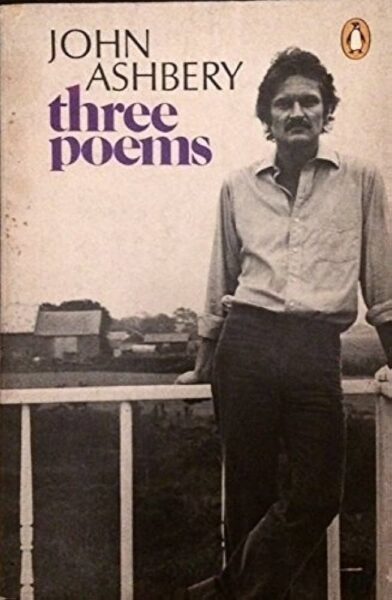
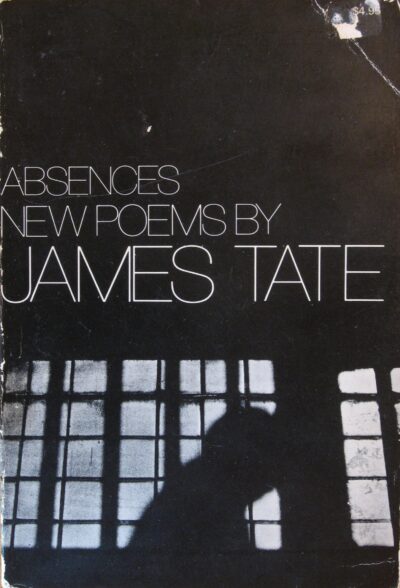
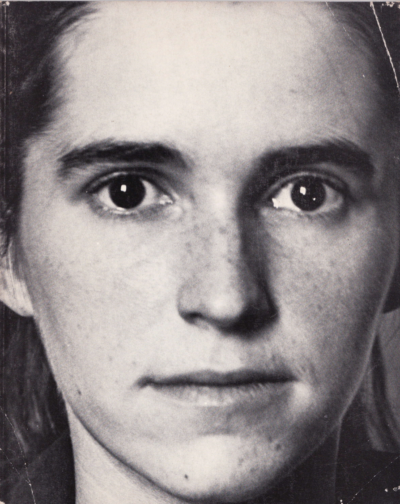
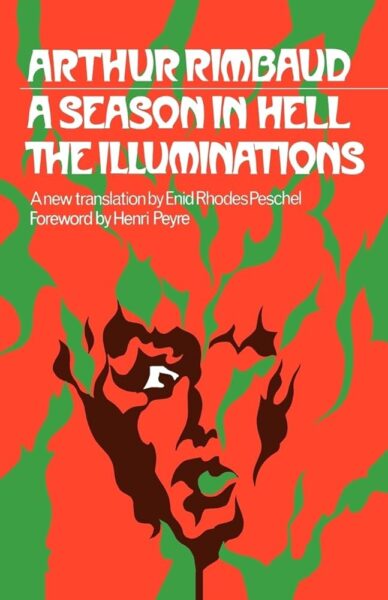

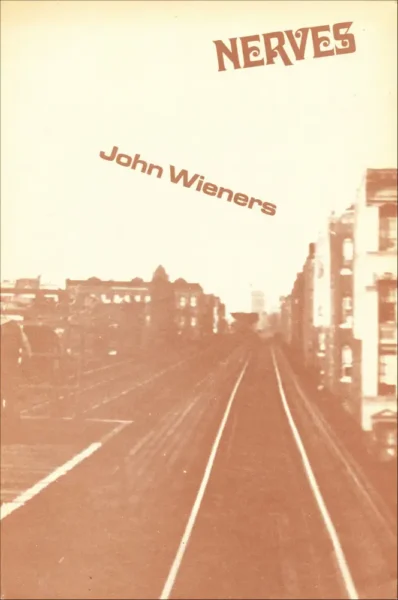
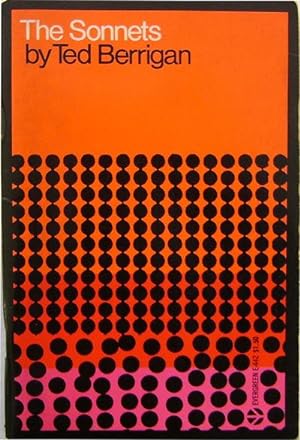
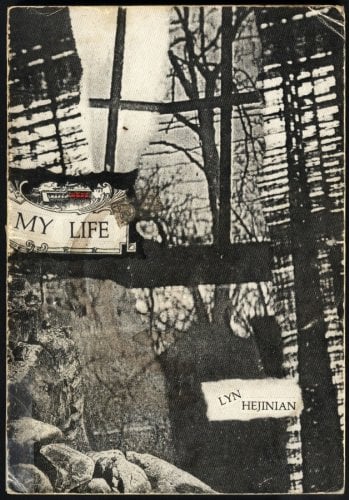
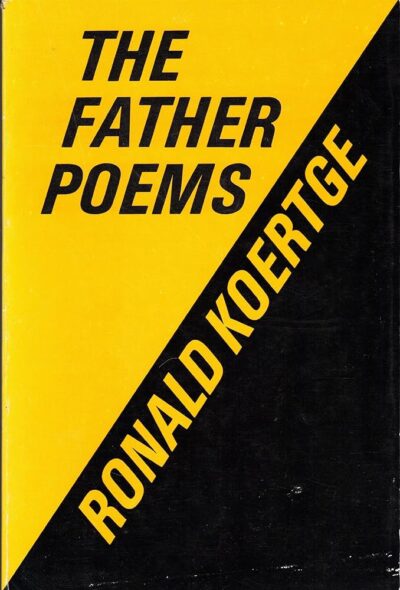
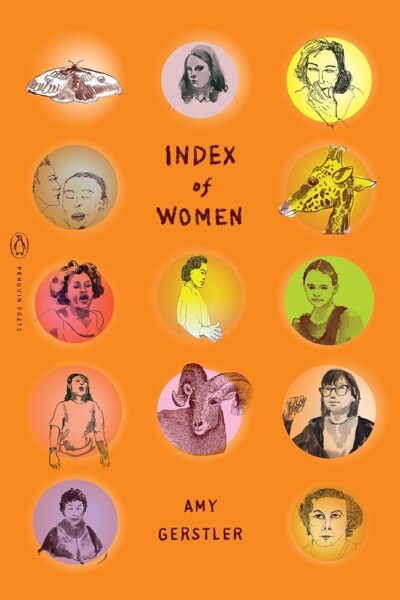
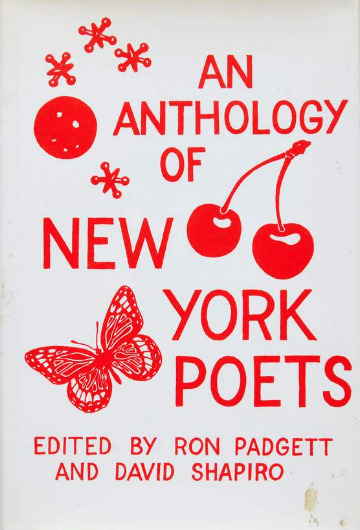
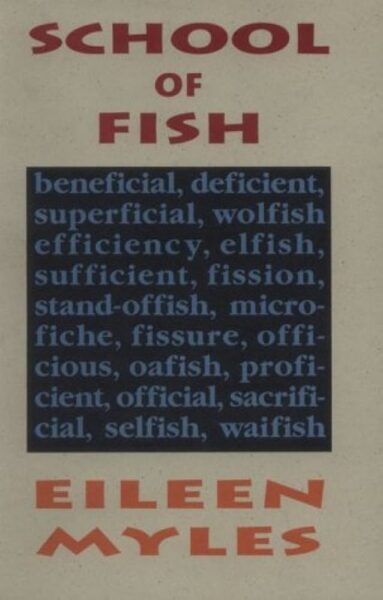
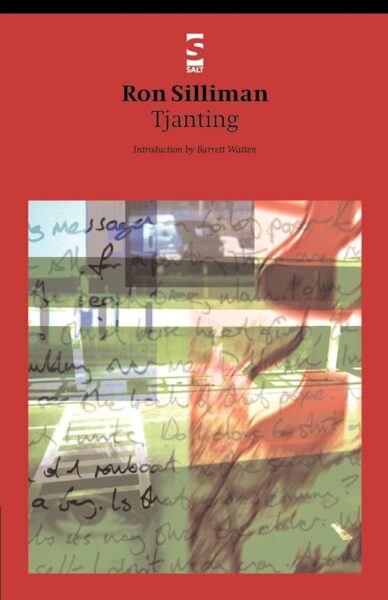


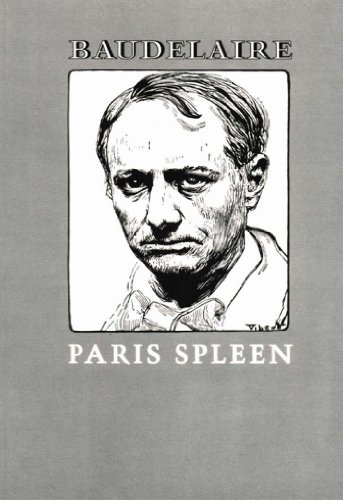
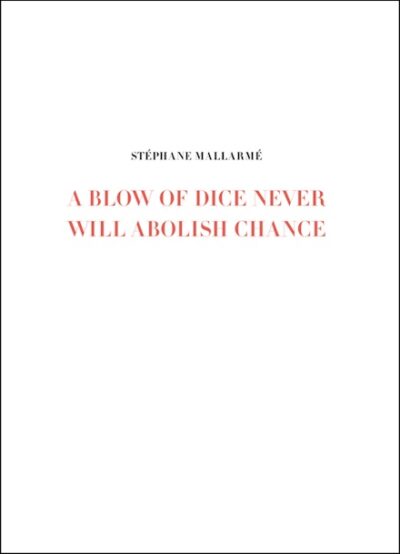
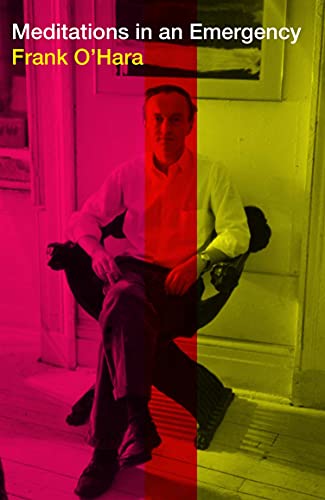
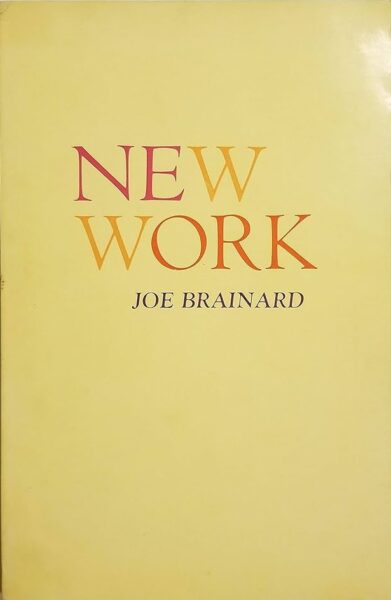


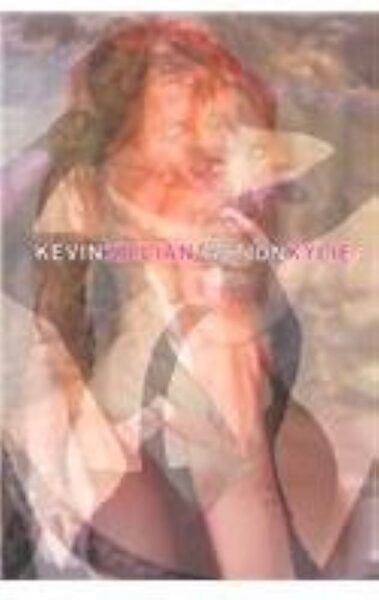
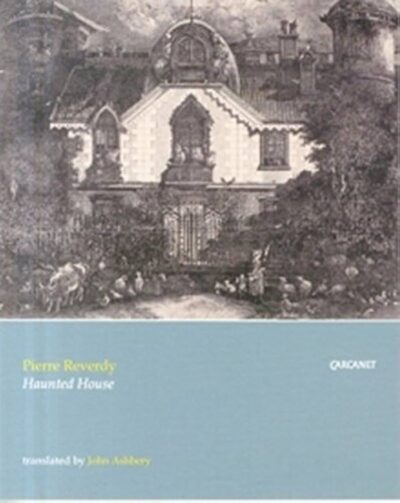
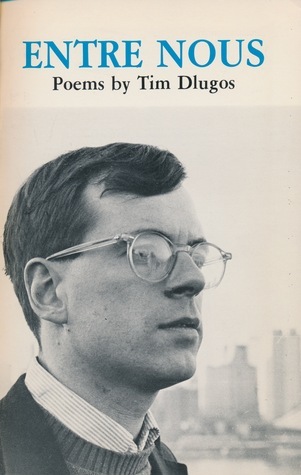
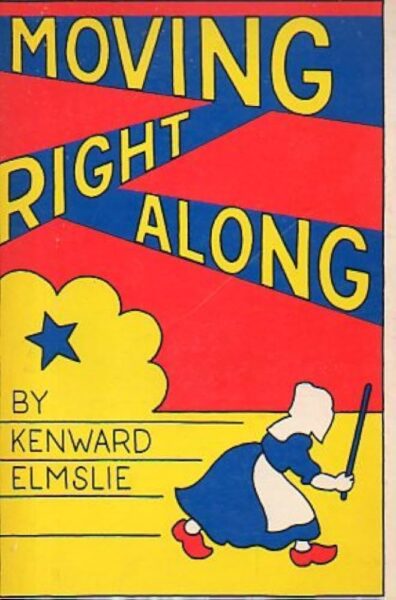

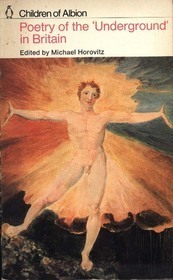
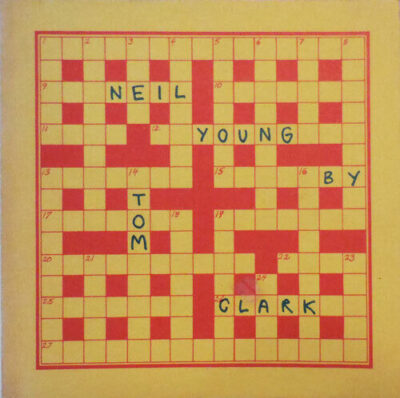
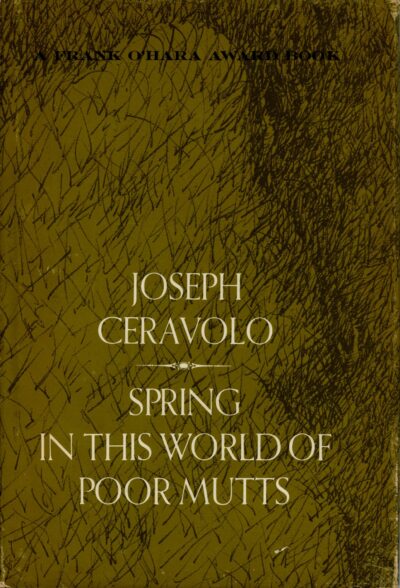
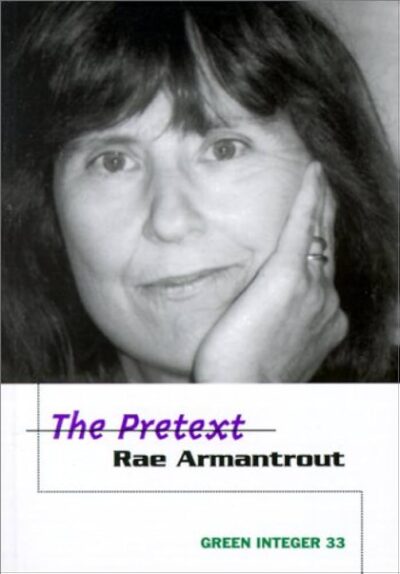
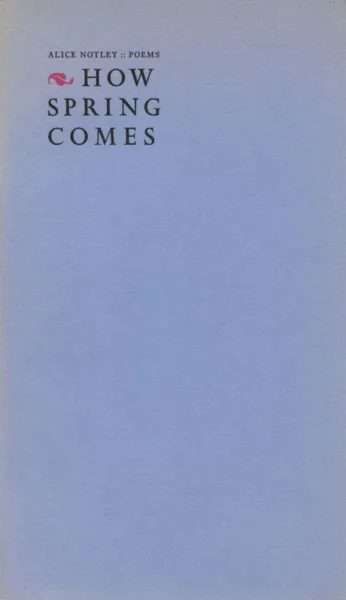
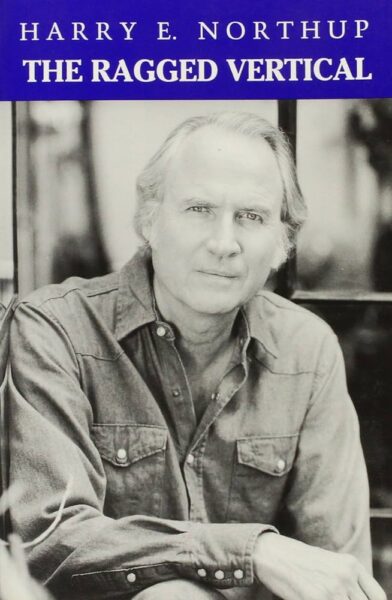
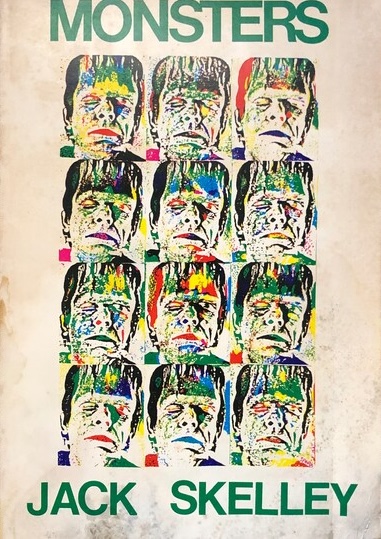

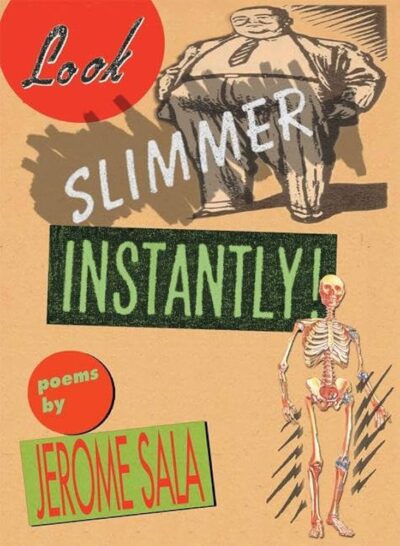

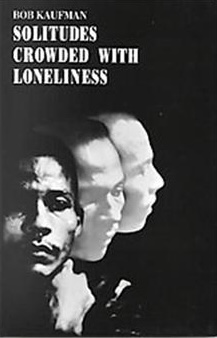
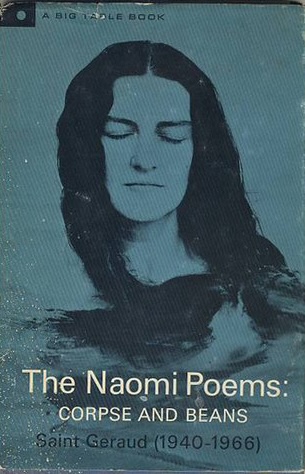
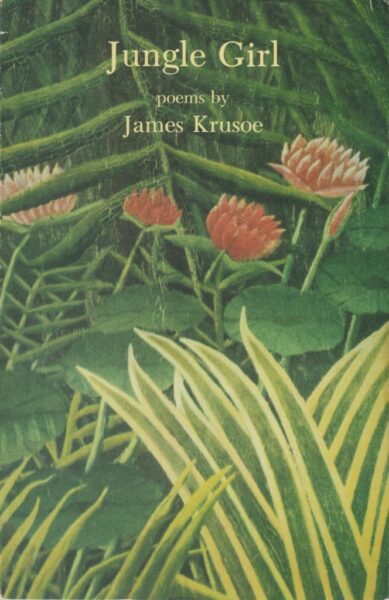
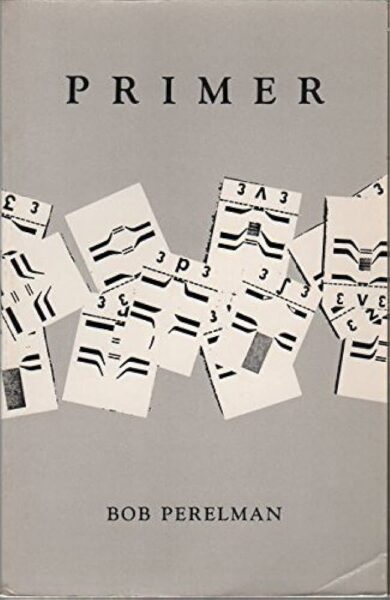

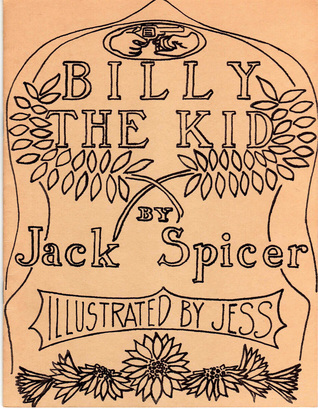
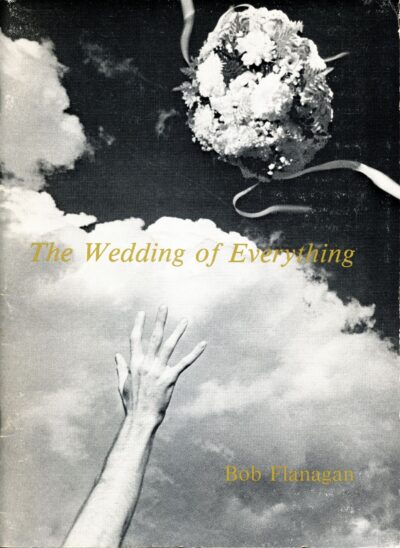
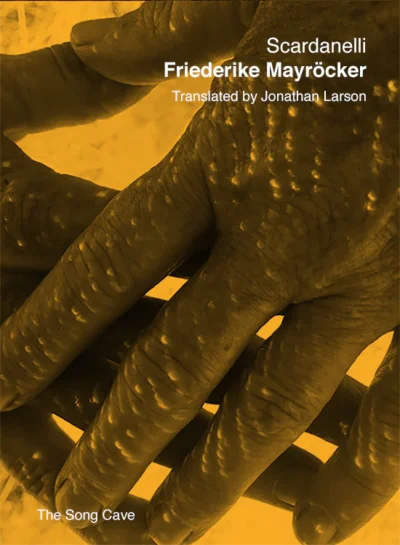
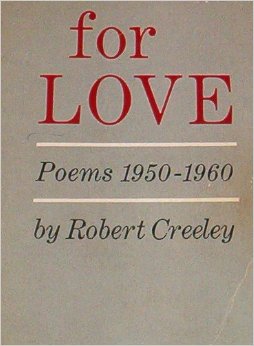

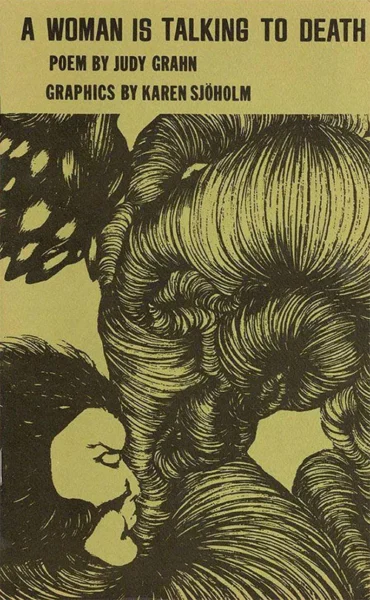
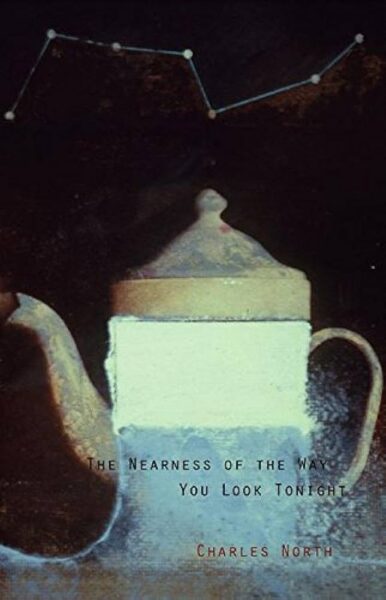





 Now available in North America
Now available in North America 